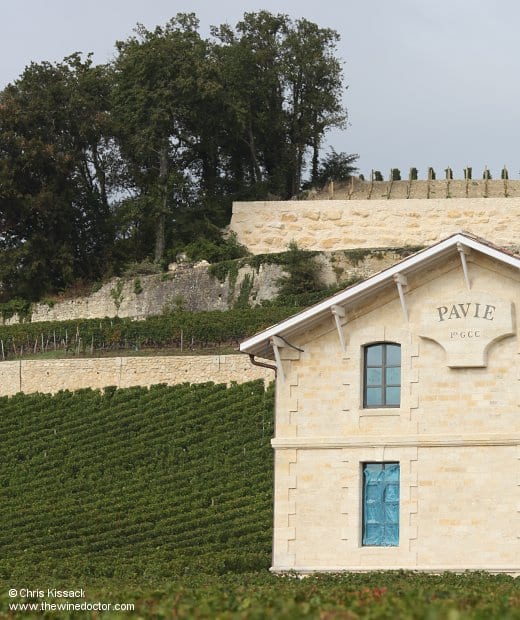St Emilion
When swanning about on the left bank, darting from one tasting appointment to the next in mere minutes, it would perhaps be easy to forget just how large a wine region Bordeaux really is. The many châteaux of St Estèphe, Pauillac and St Julien are all nestled quite close to one another, so close that you could if you wished walk from one to the next. Take a drive across to St Emilion, however, and any misconception relating to Bordeaux’s size is immediately lost. It will take you well over an hour to drive from St Julien to St Emilion, nearly an hour and a half if you are starting out in St Estèphe. And once you are here, you will be glad to still have use of your car. This is the largest of all of Bordeaux’s most famous appellations, with close to 5,500 hectares eligible, four or five times the size of a reputable left-bank appellation.
Geography, Climate and Terroir
The vineyards lie on the right bank of the Dordogne, at this point a significant river which, once joined with the Garonne just to the north of the city of Bordeaux, will flow into the Gironde estuary. The Dordogne is a masterful meanderer though, sweeping from left to right in giant loops, with a wide expanse of alluvial soils, largely too rich for the vine, on either side. For this reason, and for other reasons related to terroir which is a more complicated story here in St Emilion than any of the other grander appellations, few of the vineyards are actually anywhere near the river. It is only in Vignonet, in the south-eastern corner of the appellation, that you can plant your feet in the (rather sandy) soils of the vineyards and look out across the waters of the river.
If appellations were truly defined by terroir then St Emilion deserves carving up, for there are at least four distinctive soil types enclosed by this appellation’s boundaries, and of course many different aspects and elevations. The most significant of the St Emilion terroirs are both based on limestone, particularly calcaire à astéries which was laid down during the Oligocene, over clay and molasse de Fronsadais, also from the Oligocene. This limestone is predominantly found in the eastern part of the St Emilion appellation, where the town lies. Here the vineyards lie on the western end of an imposing escarpment; if you are fortunate enough to visit the region, this important feature of the appellation is perhaps best appreciated by driving along the D670, which runs from Libourne out to Castillon-la-Bataille, roughly parallel with the somewhat wandering line of the scarp. Many of the best domaines can be found on the plateau at the top of the escarpment where the soils are predominantly limestone, with a thin layer of soil on top, and on the slopes down to the plateau (such as Château Pavie, above, with slopes and plateau behind clearly visible), where there is a combination of limestone and clay. The plateau is divided into two sections; to the west is the St Martin plateau, where the leading estates are concentrated, dotted around the town of St Emilion itself. To the east is the St Christophe plateau, extending eastwards towards the limit of the appellation and on into Castillon; although the soils here are favourable the estates are not so prestigious.

